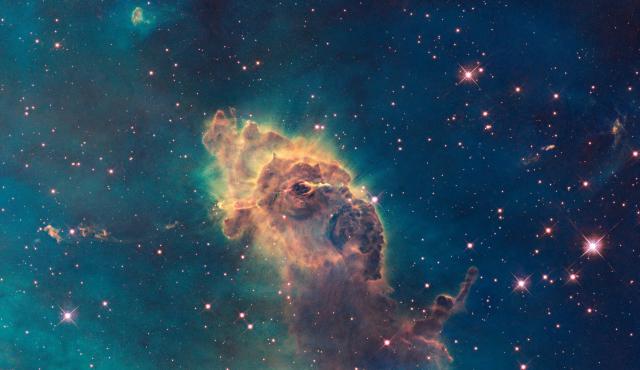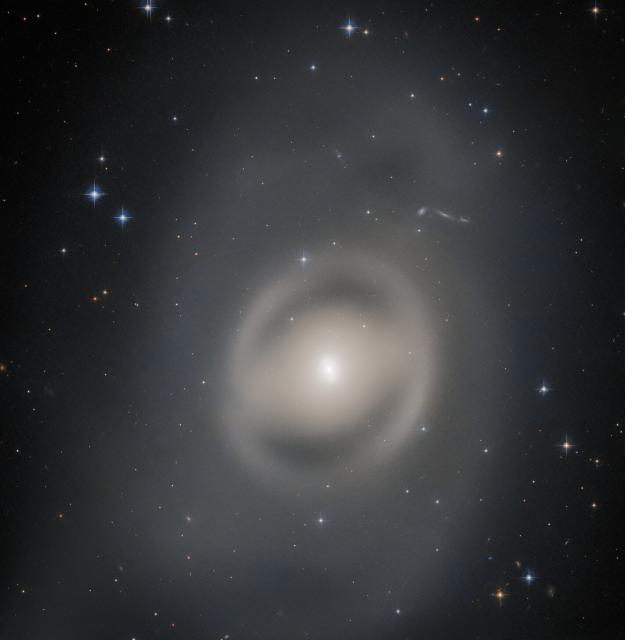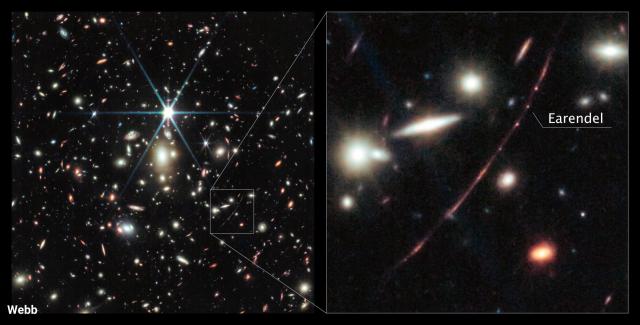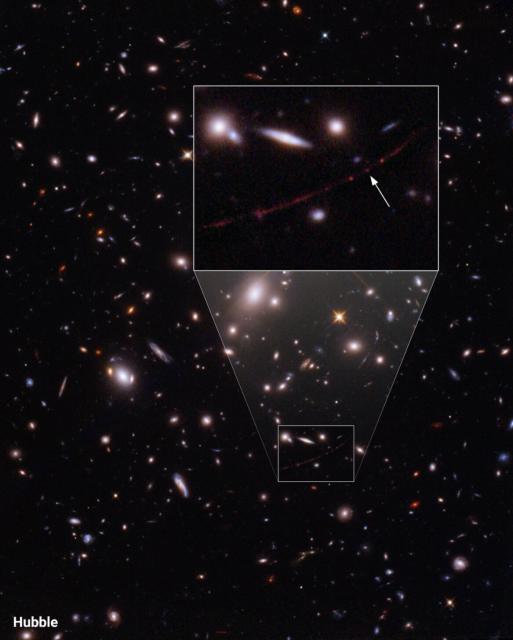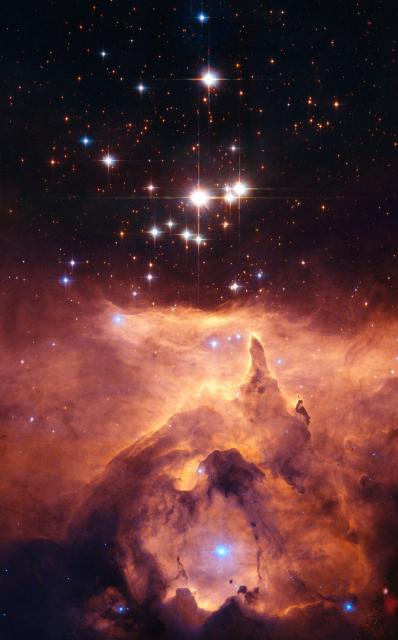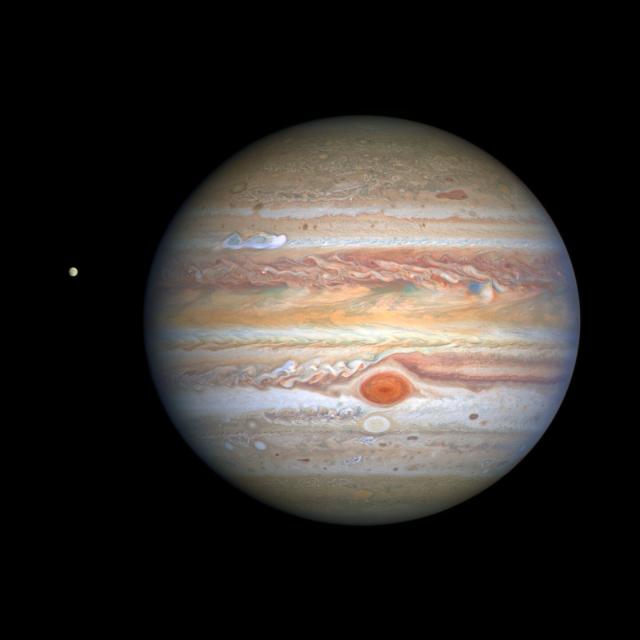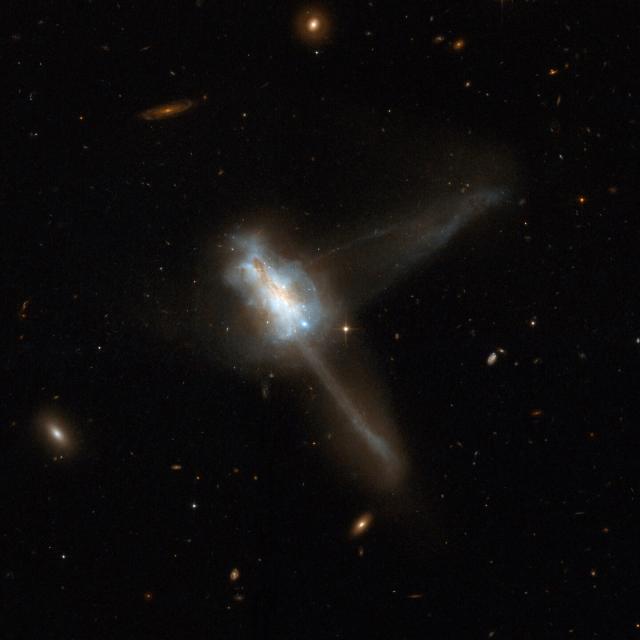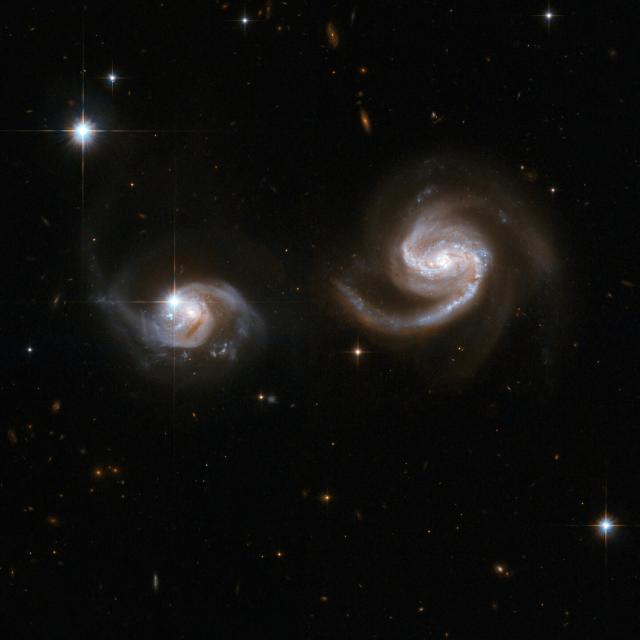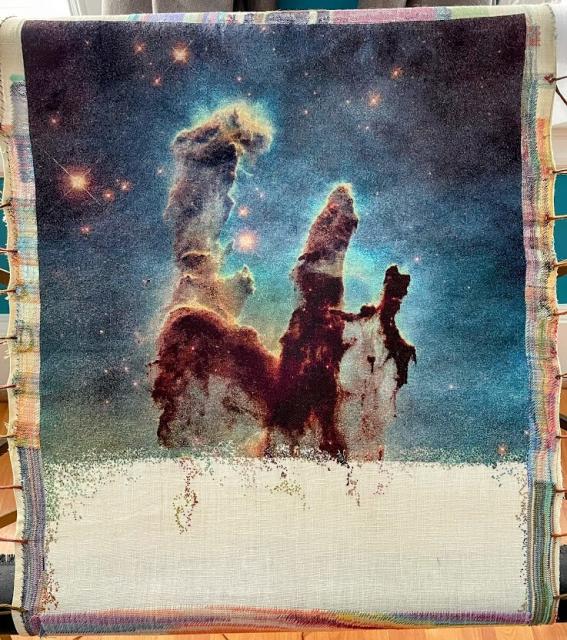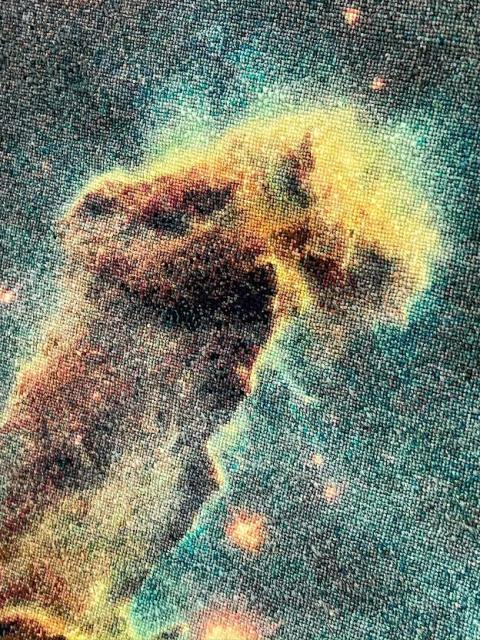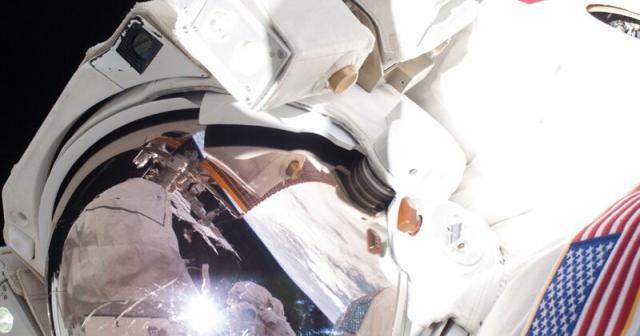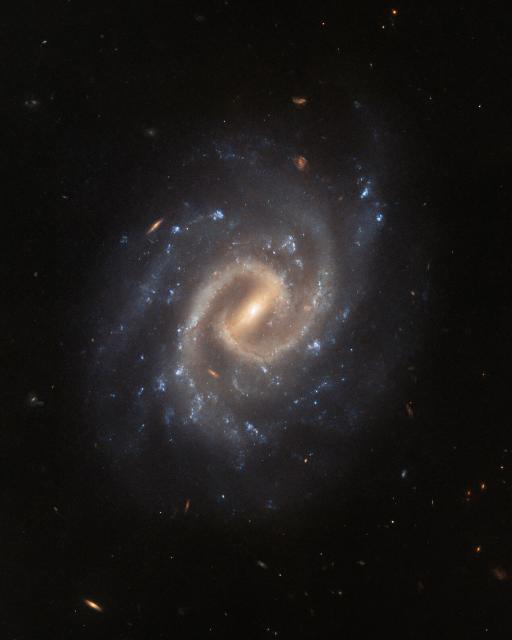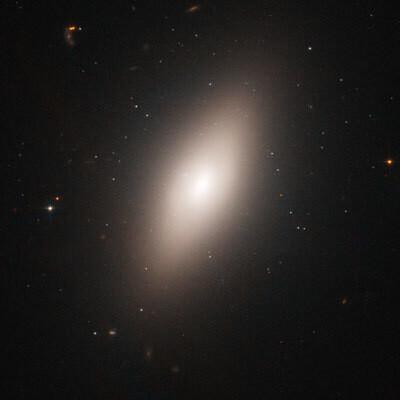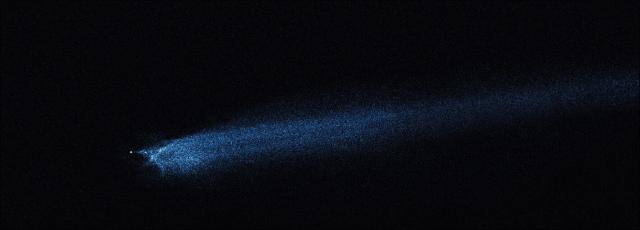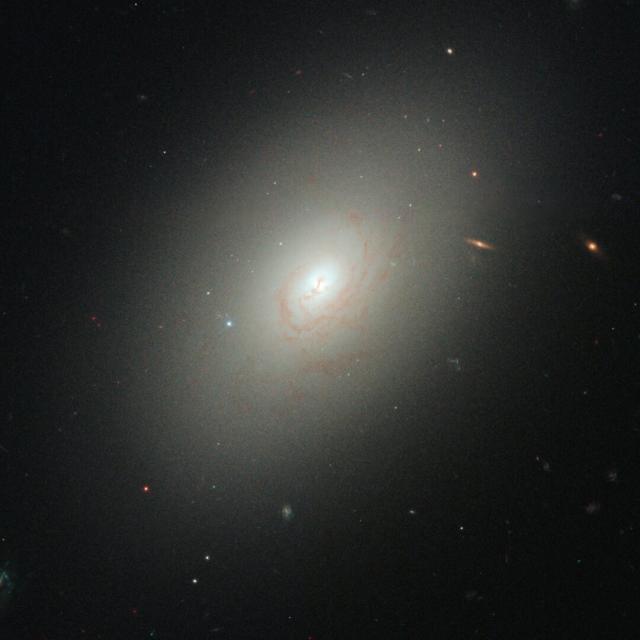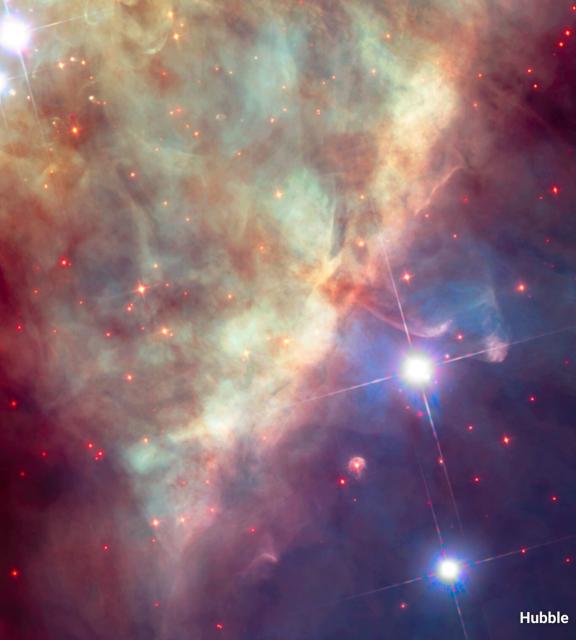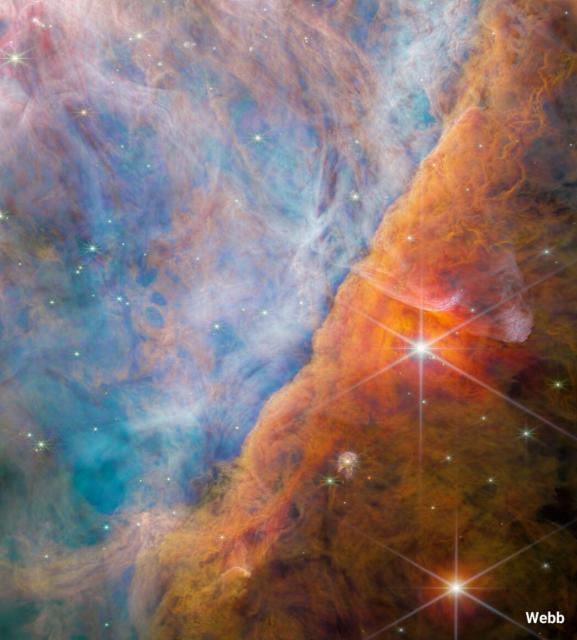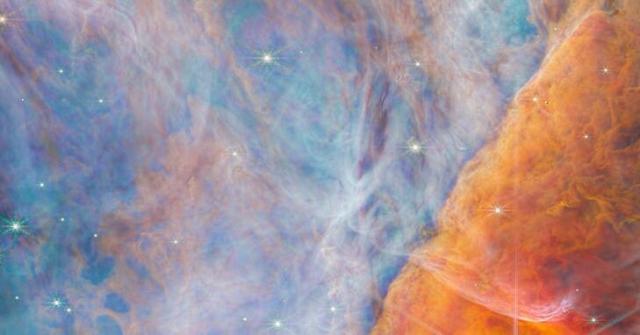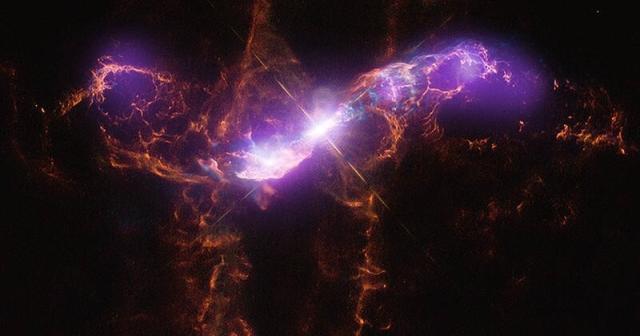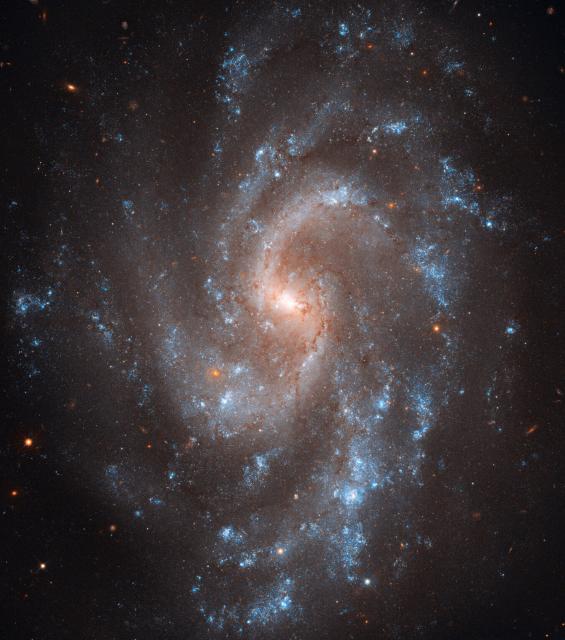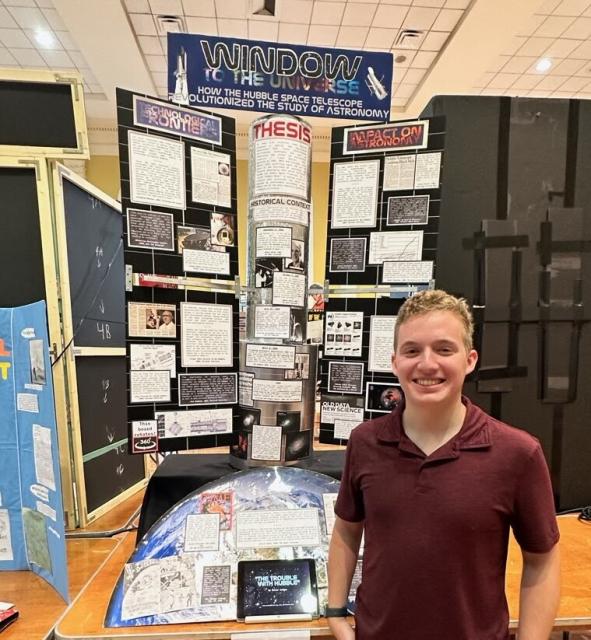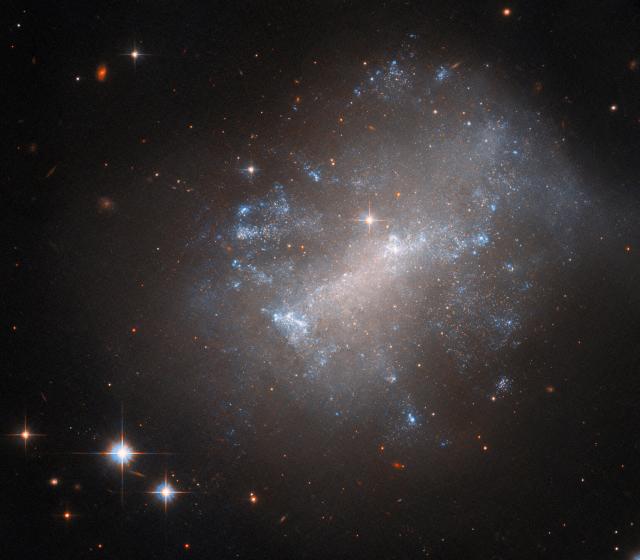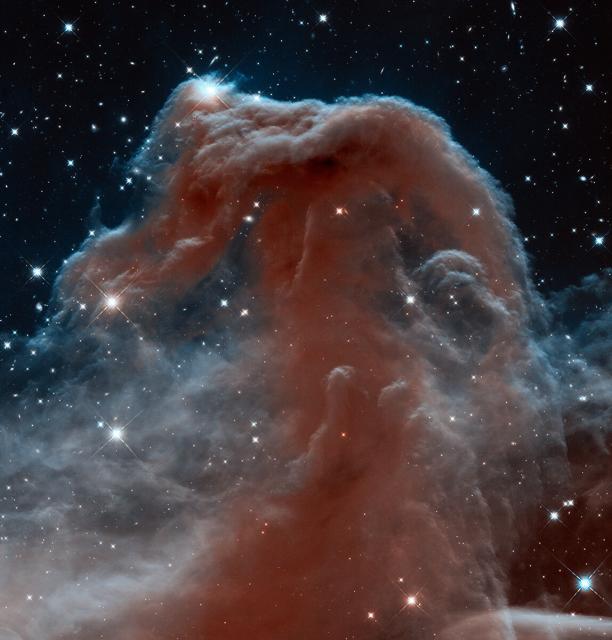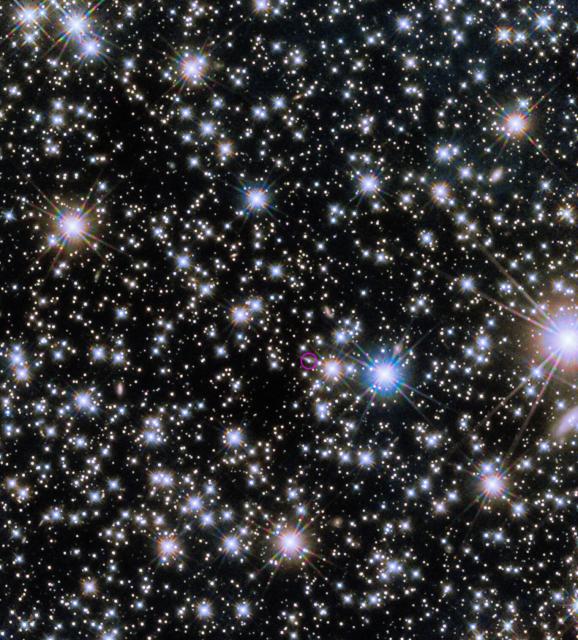Search
Items tagged with: hubble
"Hubble NGC4536 mosaic 3 flat newcont FINAL."
NASA, ESA, and J. Lee (Space Telescope Science Institute); Processing: Gladys Kober (NASA/Catholic University of America), Public domain, via Wikimedia Commons.
Star factory 🌟
This #HubbleClassic image shows the top of a pillar of gas and dust in the Carina Nebula.
Located about 7,500 light-years away, this pillar is home to newborn stars that are nestled within it. Discover more: go.nasa.gov/45oEMkv
#Hubble
The glowing, ghostly galaxy in this #HubbleFriday image is called NGC 6684.
Located 44 million light-years from Earth, it resides in the constellation Pavo! Find out more: go.nasa.gov/3OqgnUO
#Hubble
Hubble Sees Galaxy in a Ghostly Haze
The lenticular galaxy NGC 6684 bathes this image from the NASA/ESA Hubble Space Telescope in a pale light.Andrea Gianopoulos (NASA)
Webb’s vision has revealed more details about Earendel. Now we know it's more than twice as hot and about a million times more luminous than our Sun!
Based on colors observed with Webb, astronomers think Earendel may have a companion star, too: go.nasa.gov/3Ovd9iJ
#Hubble
Webb Reveals Colors of Earendel, Most Distant Star Ever Detected
NASA’s James Webb Space Telescope has followed up on observations by the Hubble Space Telescope of the farthest star ever detected in the very distant universe, within the first billion years after the big bang.Isabelle Yan (NASA)
Hubble broke records by observing the farthest star ever detected, Earendel!
Thanks to a lucky cosmic alignment, the gravity of a galaxy cluster between us & Earendel magnified the star’s light: go.nasa.gov/47pbT9w
Now, we know more about it with @NASAWebb on the job! ⬇️
#Hubble
Record Broken: Hubble Spots Farthest Star Ever Seen
NASA’s Hubble Space Telescope has established an extraordinary new benchmark: detecting the light of a star that existed within the first billion years after the universe’s birth in the big bang – the farthest individual star ever seen to date.Andrea Gianopoulos (NASA)
What will you discover about our universe on #BookLoversDay? 📚
Explore our free e-book library to uncover stories about Hubble and its history, plus learn more about the planets in our solar system, galaxies beyond our own, and more: go.nasa.gov/3YuY6dN
#Hubble
Digital Library - E-books
NASA.gov brings you the latest images, videos and news from America's space agency. Get the latest updates on NASA missions, watch NASA TV live, and learn about our quest to reveal the unknown and benefit all humankind.NASA
Cosmic collision!
Seen in this #HubbleClassic view, the galaxy IC 883 is likely the result of two gas-rich galaxies merging.
This collision likely triggered a burst of star formation, as seen by the bright star clusters in the central region: go.nasa.gov/4452W2m
#Hubble
It's #HubbleFriday time!
This week's new image shows the globular cluster NGC 6652. Globular clusters are roughly spherical groups of stars held together by their mutual gravitational attraction.
NGC 6652 is about 30 million light-years away: go.nasa.gov/3Oi5MLD
#Hubble
Hubble Glimpses a Glitzy Galactic Cluster
The glittering, glitzy contents of the globular cluster NGC 6652 sparkle in this star-studded image from the NASA/ESA Hubble Space Telescope.Andrea Gianopoulos (NASA)
The galaxy LEDA 62867 is safe... for now.
LEDA 62867 is the smaller, leftmost galaxy seen in this #HubbleClassic image. It's almost certainly going to eventually be swallowed by the larger galaxy seen on the right, NGC 6786, and its powerful gravity: go.nasa.gov/3QBJDuH
#Hubble
#Hubble
NASA Inspires Your Crafty Creations for World Embroidery Day
It’s amazing what you can do with a little needle and thread! For #WorldEmbroideryDay, we asked what NASA imagery inspired you. You responded with a variety of embroidered creations, highlighting our...nasa (Tumblr)
Hubble’s Pillars of Creation continue to inspire on #WorldEmbroideryDay! 🪡 🧵
Fiber artist Melissa Cole has always been taken by the beauty and vastness of the universe. It’s what motivated their piece after Hubble’s iconic capturing of this star-forming region.
#Hubble
#Hubble
Observatory - Hubble vs. Webb
NASA.gov brings you the latest images, videos and news from America's space agency. Get the latest updates on NASA missions, watch NASA TV live, and learn about our quest to reveal the unknown and benefit all humankind.NASA
The light we can see with our eyes is only a small part of our universe's story.
With Hubble, astronomers can observe space across many wavelengths of light, veering into the ultraviolet and near-infrared spectrums.
Find out more: go.nasa.gov/3KglHc8
[Video embedded in original tweet]
#Hubble
Explore - Light
NASA.gov brings you the latest images, videos and news from America's space agency. Get the latest updates on NASA missions, watch NASA TV live, and learn about our quest to reveal the unknown and benefit all humankind.NASA
Kick off the weekend with a relaxing view of the tranquil galaxy UGC 12295.
Shining in this new #HubbleFriday image, UGC 12295 is 192 million light-years away in the constellation Pisces.
Discover more about this image: go.nasa.gov/3rN4nFd
#Hubble
Hubble Peers at a Tranquil Galaxy
The tranquil spiral galaxy UGC 12295 basks leisurely in this image from the NASA/ESA Hubble Space Telescope.Andrea Gianopoulos (NASA)
Hiccups happen to everyone... even planets.
Hubble observed an exoplanet orbiting so close to its parent star that it experiences a consistent, torrential blast of energy, which evaporates its hydrogen atmosphere – causing it to puff off the planet: go.nasa.gov/3OzYIvm
[Video embedded in original tweet]
#Hubble

Hubble Sees Evaporating Planet Getting the Hiccups
A young planet whirling around a petulant red dwarf star is changing in unpredictable ways orbit-by-orbit.Andrea Gianopoulos (NASA)
Taken #OTD in 2006, this Hubble shot shows a rare eclipse on Uranus!
The shadow of one of the planets' icy moons, Ariel, is seen on the surface. Ariel is the tiny white dot near the center of the planet.
Find out more about this astronomical alignment: go.nasa.gov/43DulbD
#Hubble
About 2,000 galaxies make up the Virgo cluster. This #HubbleClassic focuses on one of its members, NGC 4660!
At 54 million light-years away, this galaxy is home to 205 globular clusters, which are spherical groups of stars bound together by gravity: go.nasa.gov/476ZwPe
#Hubble
Rock on! Or...off?
After last year's #DARTMission, when @nasa intentionally crashed a spacecraft into an asteroid, Hubble has been observing the aftermath.
This Hubble image shows a few dozen boulders knocked off the asteroid by the collision: go.nasa.gov/44TUlQK
#Hubble
Hubble Sees Boulders Escaping from Asteroid Dimorphos
Astronomers using Hubble's extraordinary sensitivity have discovered a swarm of boulders that were possibly shaken off the asteroid when NASA deliberately slammed the half-ton DART impactor spacecraft into Dimorphos at approximately 14,000 miles per …Jamie Adkins (NASA)
X marks the spot!
For #AsteroidDay, check out this Hubble image, which shows the aftermath of a suspected collision between two asteroids. This led to the bizarre X-shaped object seen here, at the head of a comet-like trail of material.
Learn more: go.nasa.gov/44qvx2J
#Hubble
Just checking in! 👀
Hubble sometimes checks in on our galactic neighbors, like the one featured in this #HubbleFriday view.
Known as ESO 174-1, this galaxy contains a bright cloud of stars, and a faint, meandering tendril of dark gas and dust: go.nasa.gov/46oEnjv
#Hubble
Hubble Checks in on a Galactic Neighbor
The highly irregular galaxy ESO 174-1, which resembles a lonely, hazy cloud against a backdrop of bright stars, dominates this image from the NASA/ESA Hubble Space Telescope.Andrea Gianopoulos (NASA)
Say cheese! 📸
Hubble uses two primary camera systems to image the cosmos, sending home views that have changed the way we think about our universe.
Happy #NationalCameraDay! Find out more about the observatory's cameras here: go.nasa.gov/3CQagUz
#Hubble
Observatory - Instruments
NASA.gov brings you the latest images, videos and news from America's space agency. Get the latest updates on NASA missions, watch NASA TV live, and learn about our quest to reveal the unknown and benefit all humankind.NASA
Still kicking!
Elliptical galaxies, like NGC 4150 in this #HubbleClassic image, tend to contain older stars.
But Hubble observations of NGC 4150 helped show that elliptical galaxies can have new star birth, fueled by “cannabalizing” smaller galaxies: go.nasa.gov/46tYZH8
#Hubble
Twice as starstruck 🤩
These Hubble and @NASAWebb views show the Orion Nebula, the closest major star-forming region to Earth at about 1,350 light-years away.
This region of the nebula is known as the Orion Bar, sculpted by the intense radiation from nearby hot, young stars.
#Hubble
#Hubble
Webb Makes First Detection of Crucial Carbon Molecule
This molecule, never before seen in space, is believed to be a cornerstone of interstellar organic chemistry.Madison Olson (NASA)
#Hubble
Messier 42 (The Orion Nebula)
Believed to be the cosmic fire of creation by the Maya of Mesoamerica, M42 blazes brightly in the constellation Orion. Popularly called the Orion Nebula, this stellar nursery has been known to many different cultures throughout human history.Rob Garner (NASA)
Take a listen to M104! 👂
A trio of telescopes observed this galaxy. From top to bottom, these views are from the Spitzer Space Telescope (infrared), Hubble (visible), and @chandraxray (X-ray).
Find out more! ⬇️
#Hubble
This sonification was created by scientists to provide an auditory way of experiencing these images. While this isn’t the sound “of” space, sonifications represent data in the image to highlight certain scientific aspects through sound.
Cosmic Harmonies: Sonifications From NASA Telescopes
Three new sonifications of data from Chandra and other NASA telescopes have been released.Lee Mohon (NASA)
Bound together ✨
Globular clusters, like the one seen in this #HubbleFriday image, are collections of tens of thousands of stars bound by their mutual gravitational attraction.
This cluster is NGC 6544, which is about 8,000 light-years away: go.nasa.gov/3XkhXeZ
#Hubble
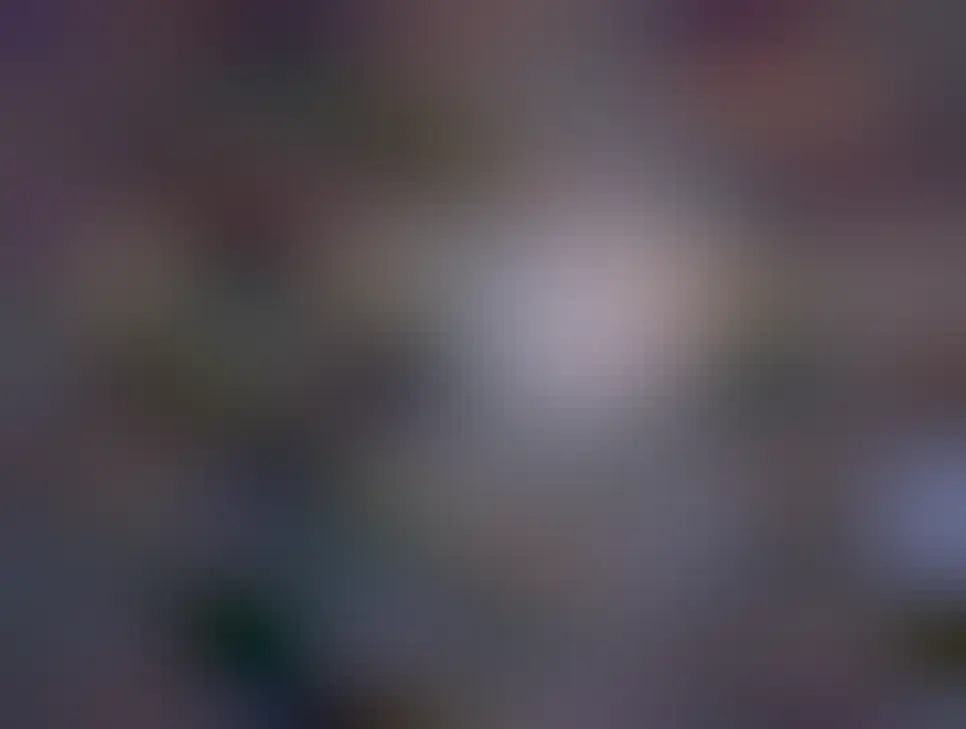
Hubble Glimpses a Glistening Cluster
The teeming stars of the globular cluster NGC 6544 glisten in this image from the NASA/ESA Hubble Space Telescope.Andrea Gianopoulos (NASA)
For #WorldMusicDay, take a listen to R Aquarii!
Using data from Hubble and @ChandraXRay, this sonification represents information in this cosmic view as sound, giving us a new way to experience the image.
Listen to more sonifications here: go.nasa.gov/447AFbW
#Hubble
Cosmic Harmonies: Sonifications From NASA Telescopes
Three new sonifications of data from Chandra and other NASA telescopes have been released.Lee Mohon (NASA)
📍 NGC 5584
About 72 million light-years away, the brilliant, blue glow of young stars traces the spiral arms of the galaxy in this #HubbleClassic image.
Thin, dark dust lanes appear to be flowing from the yellowish core, where older stars reside: go.nasa.gov/3CDjaEs
#Hubble
Gone fishin’? 🎣
We’re wishing a relaxing #FathersDay to all the dads and father figures out there! Enjoy this Hubble view of the Lagoon Nebula, 4,000 light-years away.
Find out more: go.nasa.gov/3CwsVEq
#Hubble
Messier 8 (The Lagoon Nebula)
Commonly known as the Lagoon Nebula, M8 was discovered in 1654 by the Italian astronomer Giovanni Battista Hodierna, who, like Charles Messier, sought to catalog nebulous objects in the night sky so they would not be mistaken for comets.Rob Garner (NASA)
#Hubble
Have a happy #HubbleFriday!
This image shows the galaxy NGC 7292, which resides about 44 million light-years away.
NGC 7292 is irregular, meaning that it lacks the distinct spiral arms or elliptical shape that some galaxies have: go.nasa.gov/42EDDna
#Hubble
Hubble Captures a Billowing Irregular Galaxy
The galaxy NGC 7292 billows across this image from the NASA/ESA Hubble Space Telescope.Andrea Gianopoulos (NASA)
Roses, jellyfish, horses…
Hubble’s view of our universe includes cosmic images that remind us of the plants and animals right here on Earth!
Happy #NaturePhotographyDay!
#Hubble
The galaxy next door!
This #HubbleClassic view shows a star field in the outer disk of the Andromeda Galaxy, which is the nearest major galaxy to our Milky Way.
Explore more: go.nasa.gov/45WRs3i
#Hubble
Happy launch-iversary to the Fermi Gamma-ray Space Telescope!
Hubble and Fermi have teamed up to study some of the universe’s most powerful events, like the “BOAT” – Brightest of All Time – gamma-ray burst (infrared afterglow circled in image): go.nasa.gov/45XFfem
#Fermi15
#Hubble
NASA Missions Study What May Be a 1-In-10,000-Year Gamma-ray Burst
On Sunday, Oct. 9, 2022, a pulse of intense radiation swept through the solar system so exceptional that astronomers quickly dubbed it the BOAT – the brightest of all time.Francis Reddy (NASA)
Hubble's spectacular image of Eta Carinae was released #OTD in 1996!
Explore this fascinating star's history with @nasa astronomer Dr. Keith Noll.
Find out more: go.nasa.gov/3Ck6cLV
#Hubble





